
Harvest and Store the Best Pears
Growing your own food is a great way to increase your self-reliance and provide the most nutritious produce for your family. Pears are one of my favorite fruits to grow in a home orchard and for good reason. They are fairly easy to raise and homegrown pears are one of the most delicious fruits I have ever tasted! However, it’s important to learn how to harvest and store your homegrown pears properly or they might go to waste!
This post contains affiliate links or advertisements.


How to Harvest Pears Properly
The biggest mistake I see people make when harvesting pears is in timing. If you wait until they are fully ripe, your pears will be brown and mushy in the middle. So don’t wait until they turn yellow and smell delicious to pick these tasty fruits or you are sure to be disappointed.
Here’s how to harvest your pears for the best results:
- Harvest pears when they are still green and firm. They should be fully mature and the color should have changed from deep green to light green.
- Use a ladder to pick pears by hand and twist the stem from the branch instead of pulling on the fruit, whenever possible. (This prevents damage to the fruiting spurs.)
- To reach pears in the higher branches, use a fruit picking tool with a soft liner to prevent damage to the fruit.
- Do NOT shake the tree to harvest fruits or they will bruise and their keeping quality will be greatly reduced.
As an Amazon Associate, I earn from qualifying purchases.
Once you’ve harvested your homegrown fruit, it is important to sort out and use any with bad spots, bruises, or insect damage first. You may need to set these fruits aside and allow them to ripen before using them. As soon as they smell like a pear, cut away any bad spots and eat them fresh or use them in recipes.
How to Store Pears for the Best Results
Once you remove any pears with damage, you are ready to store the sound fruits to use later. Some pears keep well into winter under proper storage conditions while other varieties are best used or preserved soon after harvest.
How to Ripen Your Pears for Fresh Use
If you’d like to use your pear harvest quickly, place the fruits in a brown paper bag. Keep them at room temperature and check them daily for ripeness.
Your pears are ready to use when the color starts to turn yellow and they smell like a ripe pear. The fruit should soften up but it shouldn’t be easy to bruise. Don’t wait until the fruit is soft to can, dehydrate, freeze, or make jam. You’ll want the pears to be firm enough to hold their shape when peeled and cut.
How to Store Pears for Later
The best way to keep pears for longer storage is in cold storage. If you have room in a refrigerator you can keep these delicious fruits and ripen them as needed. If your pears are not a variety that is good for storage, you’ll still need to use them up within a few weeks.
Here’s how to store pears for a month or so:
- Place unripe pears in a paper bag in the refrigerator
- Remove a few pears at a time to ripen on the counter for a couple of days
- Use these fruits quickly once they turn yellow and smell ripe
- Be sure to check refrigerated pears often and remove any that have ripened or developed bad spots
Keep in mind that once any fruit begins to ripen, it releases ethylene gas and this naturally occurring chemical stimulates the surrounding fruits to begin ripening, too. So remove the ripest-looking pears from your refrigerator first. Once your pears ripen, use them quickly to prevent waste.
How to store pears for several months:
- Plant pear varieties that are good for winter storage
- Remove any damaged or ripe fruit and use those quickly
- Wrap each pear individually in newspaper or tissue paper and place in a cardboard box, 2 or 3 layers deep.
- Place boxes of pears on a shelf in your root cellar (do not store on the floor)
- Keep the temperature of the storage space between 32 and 40 degrees Fahrenheit and the relative humidity between 80 to 90%.
- Check your stored pears often and remove any that are ripe or develop spots so they don’t cause the rest of your fruit to spoil.
- Do not store pears and other fruits in the same space as vegetables. The ethylene gas from fruits may shorten the storage life of vegetables.
Some websites list the storage temperature for pears at 29 to 31 degrees Fahrenheit… which is below freezing. It is important that your fruit is not kept at temperatures this low or they will rot when they thaw.
As an Amazon Associate, I earn a commission from qualifying purchases.
The Best Pears for Storage
Some pear varieties are better for long-term storage than others. Some of the most popular pears are not particularly good for storage. Bartlett pears are delicious, but they may only be kept in the refrigerator for up to around 45 days. Keiffer and Bosc pears will keep about 60 to 70 days at temperatures just above freezing.
Here are some of the best pear varieties for longer storage at 32 to 33 degrees Fahrenheit:
- Comice – keeps up to 3 months
- Shenandoah – keeps up to 4 months
- D’Anjou – keeps up to 4.5 months
- Winter Nellis – keeps up to 6 months
The Best Pears for Preserving
If you don’t have a root cellar or enough space in your refrigerator for storing pears, you might wish to preserve the extras by canning, freezing, or dehydrating them. Those jars of preserved pears will be a welcome change in winter!
Here are some of the best varieties of pear for canning and preserving:
- Bartlett
- Keiffer
- D’Anjou
- Bosc
- Comice
How to Preserve Pears
In addition to cold storage, you may preserve your pears for long-term storage. Canned pears are shelf stable for one to two years but frozen pears should be used within one year. Dehydrated pears are shelf stable but should be used in about 6 months for the best flavor
To Can Pears:
- Wash, peel, halve and remove cores from your pears
- Use ascorbic acid or bottled lemon juice to prevent browning
- Hot pack pears by boiling 5 minutes in a syrup solution, water, or fruit juice
- Pack hot pears in jars and fill with juice, leaving 1/2 inch headspace
- Remove air bubbles, wipe rims and adjust lids
- Process in a boiling water bath for 20 minutes for pints and 25 minutes for quarts at 1,000 feet of elevation
- Label and store in a cool (but not freezing) dark spot for 1 to 2 years
To Freeze Pears:
- Wash, peel, and core pears
- Use ascorbic acid or bottled lemon juice to prevent browning
- Boil pears for 1 to 2 minutes in a very light, light, or medium sugar syrup or in apple or white grape juice
- Pack pears into freezer containers and cover with syrup or juice
- Label and freeze
- Use frozen pears within 1 year for the best flavor
To Dehydrate Pears:
- Wash, peel, and core pears
- Slice pears thinly and use ascorbic acid or bottled lemon juice to reduce browning
- Arrange pear slices on dehydrator trays and place in dehydrator
- Set temperature to 140 degrees Fahrenheit and dehydrate until the fruit is pliable and has a leathery texture.
- Store dried fruit in an airtight container
- If you notice moisture in the container, the fruit is not dry enough and must be placed in the dehydrator for a longer period of time
- Use dehydrated fruit within 6 months for the best flavor
As an Amazon Associate, I earn a commission from qualifying purchases.
Keep Your Pears In Cold Storage!
It’s a great feeling to grow your own fruits and vegetables and save money on groceries. You know how your food was grown and harvested and using fresh foods from your own garden or orchard provides the most nutrients.
Having the option of preserving produce by canning, freezing, dehydrating, or cold storage in a root cellar is very helpful for families on a budget. The easiest method of keeping those long-storage pears is in cold storage, such as the refrigerator or a root cellar. While refrigerator space is often limited, a root cellar allows you to store several bushels of fruit to supply your family with fresh fruit for much of the winter!
Do you grow and harvest your own pears? What is your favorite variety? Leave a comment!
As an Amazon Associate, I earn from qualifying purchases.


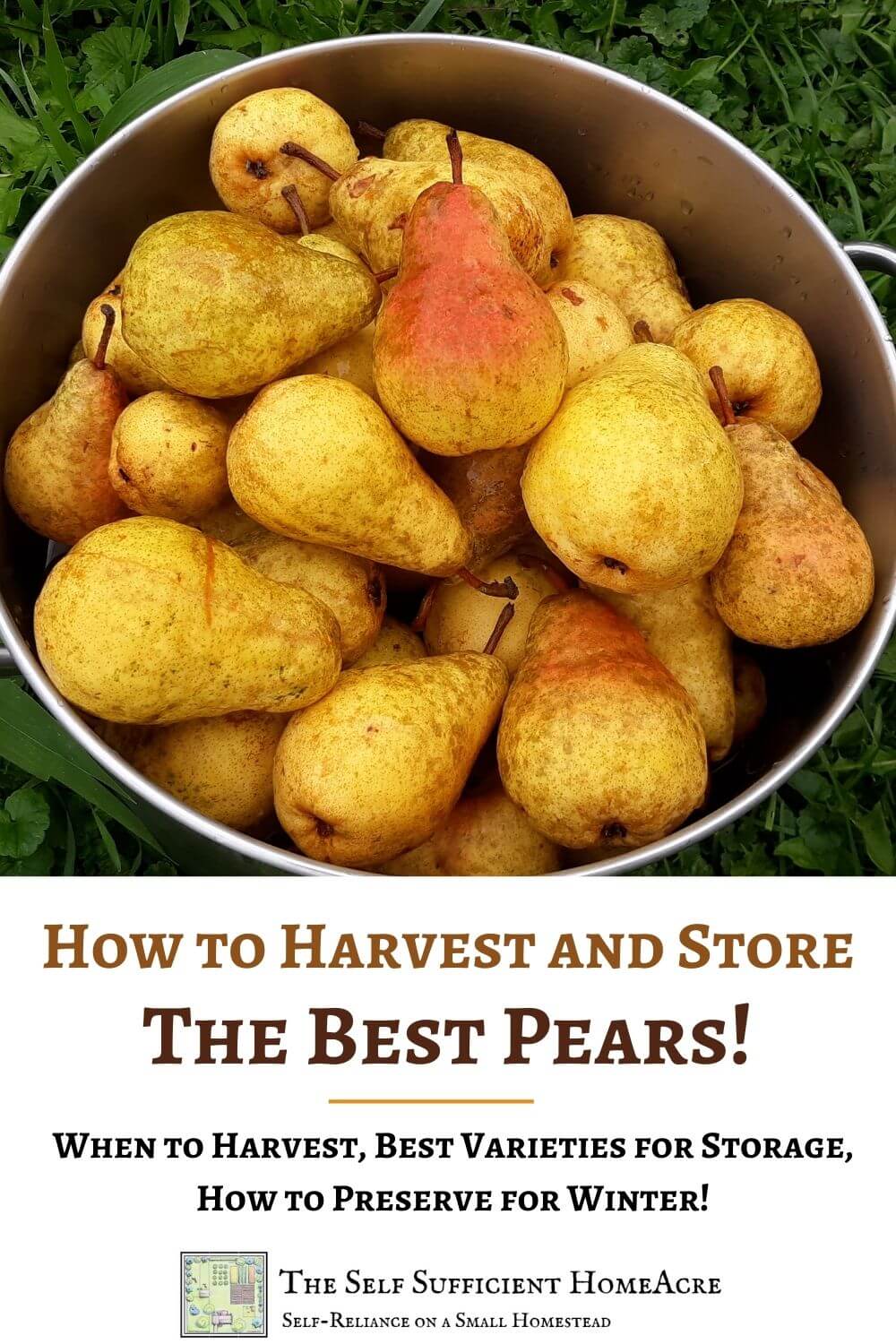

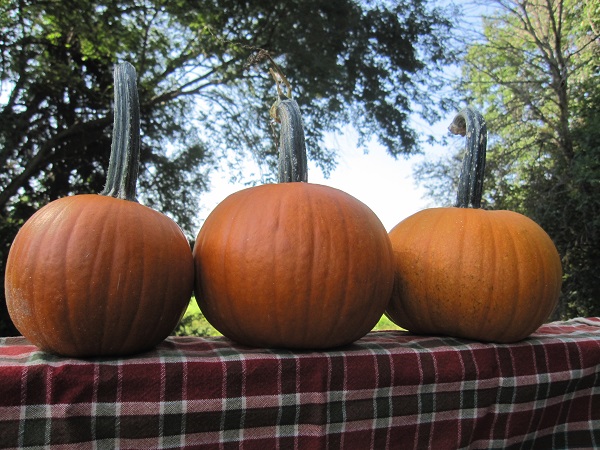
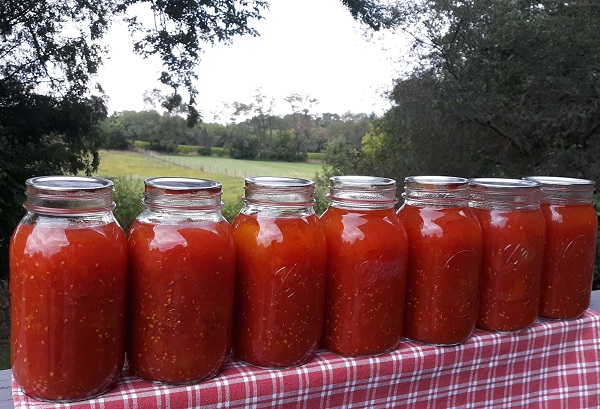
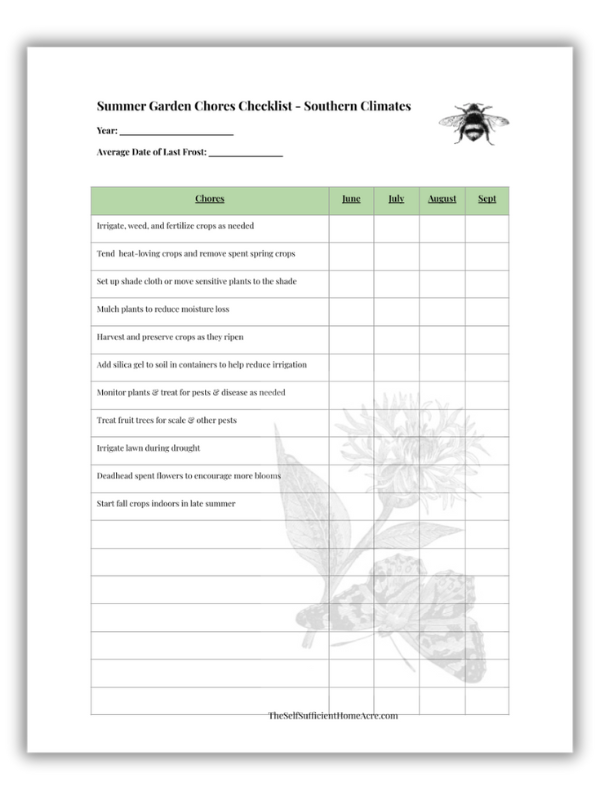

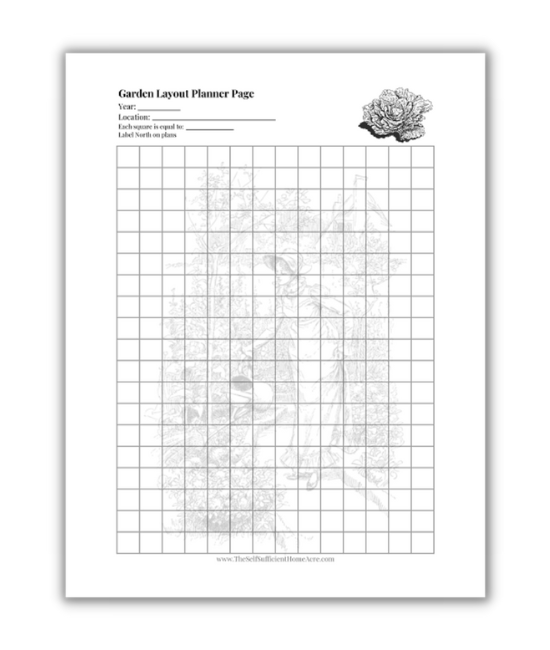

Your home canned pears look so good. Pears seem to be one fruit that tastes really good even when canned. Thanks for the tips on how to preserve the different varieties.
Blessings to you!
Laurie
Thank you for hosting! This is what I featured the week of 9-14 to 9-18-2020 on my blog. On Tuesday was Apple Slab Pie. Wednesday was Apple Cider Cinnamon Sugar Donuts. Thursday was Perfect Fall Apple Pie. And winding up this week Butternut Squash Ravioli in Browned Butter. Enjoy!
Thanks for the party!
Thank you for joining us, Amy!
Thanks so much for taking the time to host each week!!
It is greatly appreciated!!
Stay safe, healthy and happy!
Hugs,
Deb
Thank you, Deb! So glad to have you here… thanks for sharing!